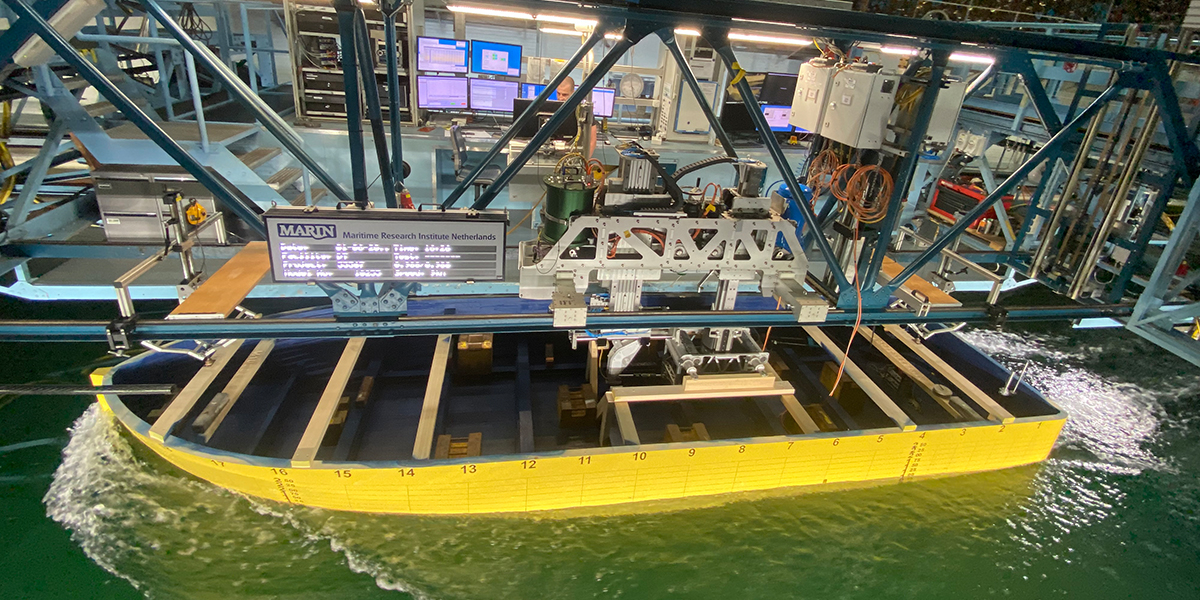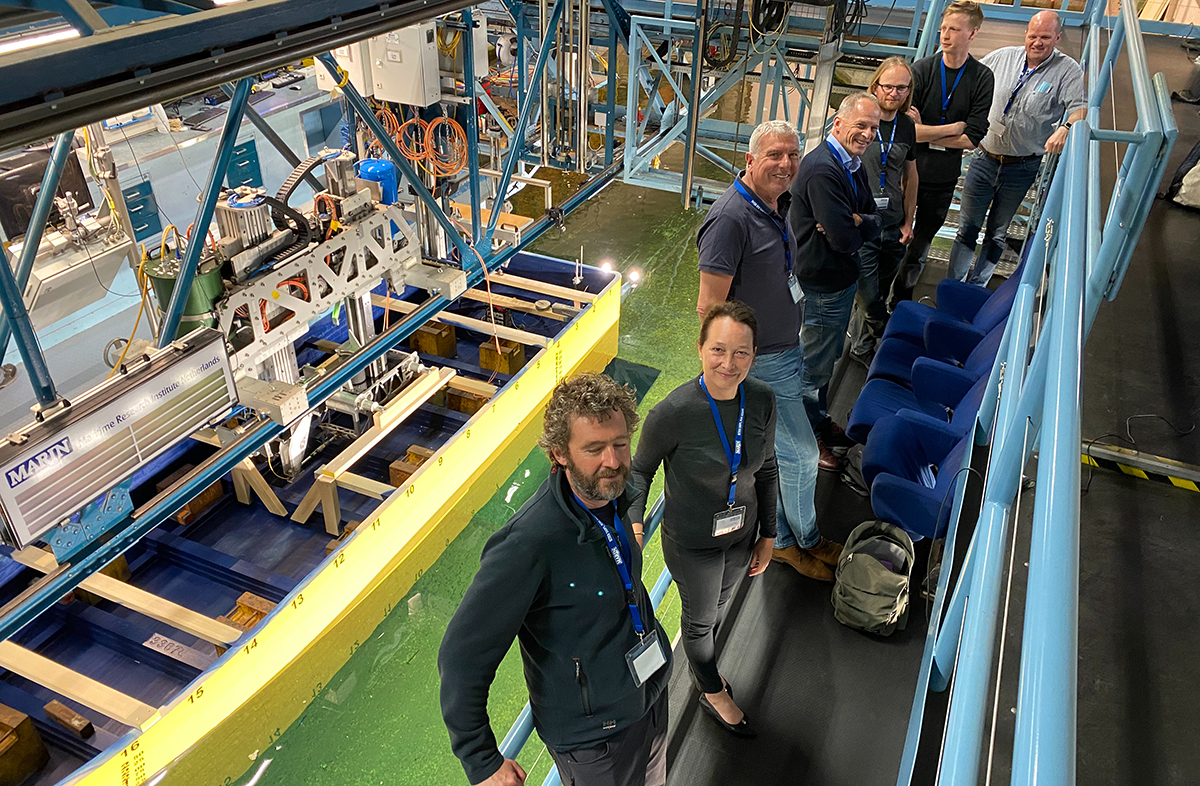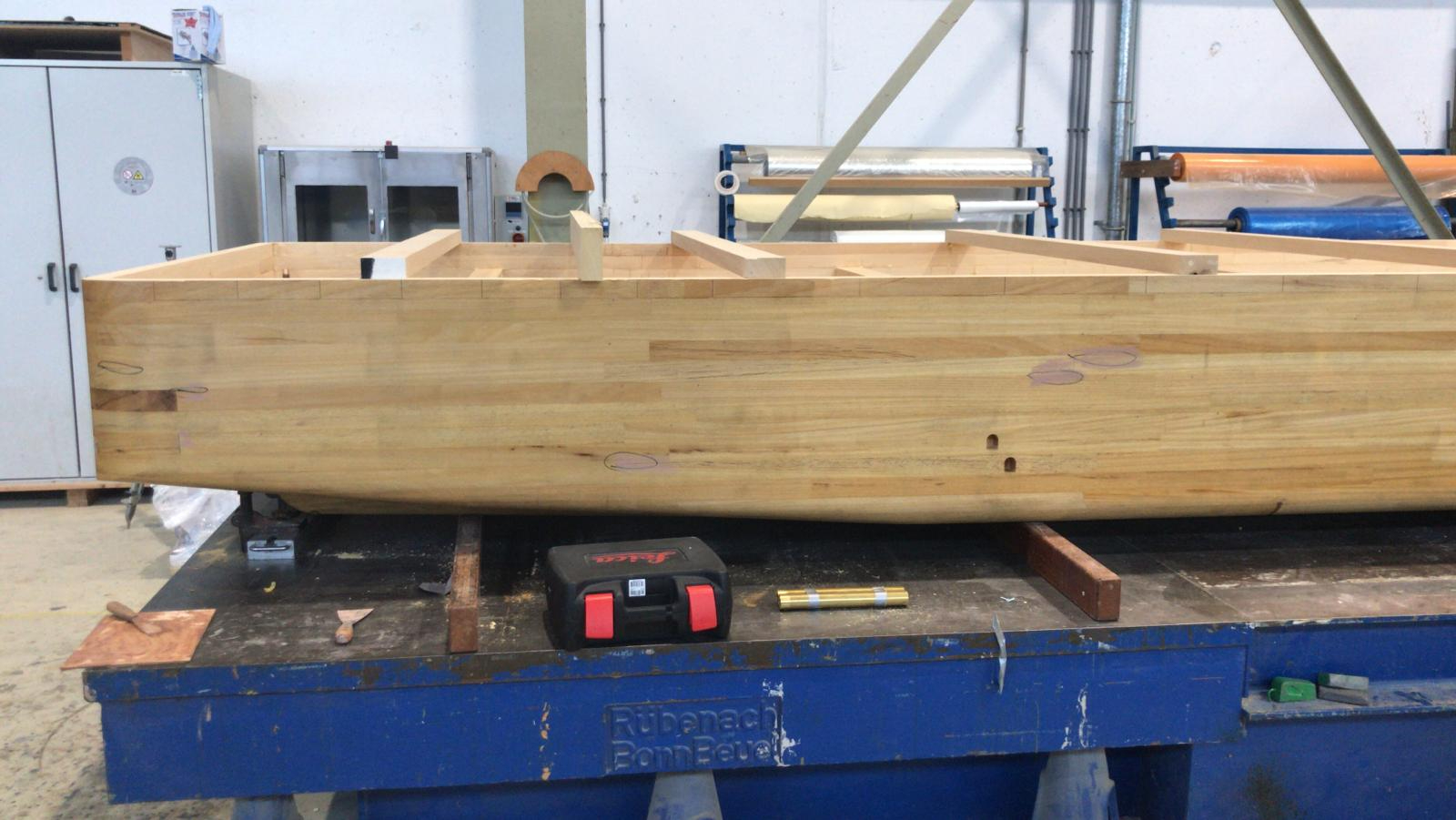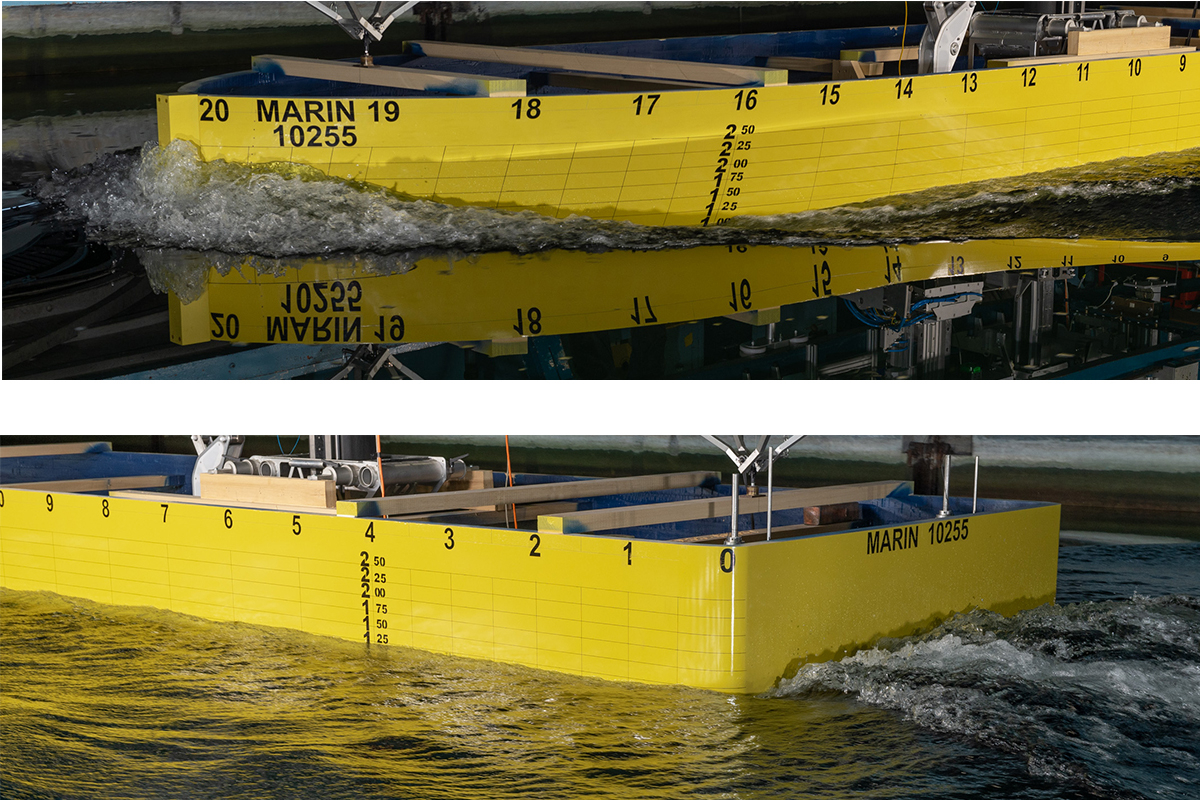Successful modeltests of RV Wim Wolff

Priscilla van Amerongen (Thecla Bodewes Shipyards) explained the current construction phase of the RV Wim Wolff: “The project team is now working on the Basic Design and already started with parts of the detailed engineering and the procurement of equipment components such as the propulsion engines and the propeller shaft line”. The hull form has been recently frozen and these powering model tests are executed with a dedicated custom-made wooden ship model of approx. 7-meter length, a scale of 1:5. The powering resistance test are performed by towing the ‘bare’ hull (without propellers and rudders), and the powering propulsion test are performed in self-sailing mode, thus with propellers and rudders. “The results of these test will provide the final needed power capacity and contribute to the selection of the propulsion engines”, so Van Amerongen explained.
The tests are an addition to the previous performed computer models, explained by Arie de Jager (MARIN): “During the design phase the propulsion performance of the vessel will be estimated. However, from a physics point of view, we are not always on the right approach, in particular not for such a specific vessel like this”. At the end of the day the tests did not show any big surprises and the vessel meets the requirements as requested. “The wave pattern looks fine for a relatively high vessel speed. The reason for conducting resistance tests as well as propulsion tests is to establish the interaction between the propeller and the hull. The propellers seem to be on heavy duty. That is more or less expected, given the fact that the propeller diameter is restricted due to the shallow water draft restrictions for the Dutch Wadden Sea”.
Feico Hoogeveen (site manager NIOZ/NMF) has also attended the model tests. He adds; “By performing those tests, the quantity of force of the propellers acting on the water, which is needed to have the ship sailing at the required speed, will be established. This force ultimately drives the determination of the required propulsion capacity of the power that is to be installed on board the vessel. With this information the propulsion engines and propellers will be procured”. Hoogeveen points out that in this phase the good joint effort with the Thecla Bodewes Shipyards is essential to deliver the required results.

Van Amerongen continues “It is really a nice and innovative project containing a few technical challenges such as the restricted draught of 1 meter, resulting in the choice for an aluminum hull (instead of steel) to be able to reduce weight. On top of that the accommodation is up-to-date and spacious including high comfort requirements with respect to noise and vibrations. It is interesting working together with the project team of NIOZ to design and construct such a dedicated research vessel for scientists. Because the teams of Thecla Bodewes Shipyards and NIOZ are working together as one, the knowledge and know-how of scientists, naval architects and propulsions specialists with a mindset focused on the future, are coming together in the construction of the research vessel Wim Wolff ”.

